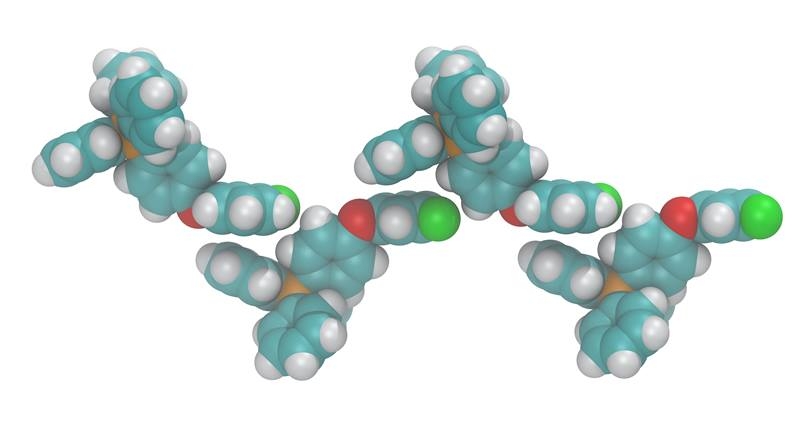The Science
Although opposite charges always attract, they do not always interact as closely as possible. In this work, researchers used a combination of molecular simulations and experiments to demonstrate the effects of subtly changing the structure of positively charged cations in compounds made up of ions. These changes encourage the cations to align with each other in the solid phase of matter. This decreases some types of potential interactions between cations and negatively charged anions in the solid phase. This cation alignment also decreases the melting point of the ionic compound, often significantly.
The Impact
Many chemical processes require liquids as solvents for chemical reactions, lubricants, heat transfer fluids. The liquids often vaporize in the process. This can create hazardous emissions. Liquid ionic compounds (ionic liquids) offer a solution to this problem because they have very low volatility, meaning they are less likely to vaporize. Some ionic liquids are stable at high temperatures, but their melting points can be too high for practical use. The results of this work provide scientists with a new set of tools to design ionic compounds with lower melting points. These results will enable scientists to design ionic compounds for use over a broader range of temperatures and applications.
Summary
Ionic liquids are salts that are liquids at the temperature at which they are used. These liquids have a variety of potential uses in environmentally benign processes. In particular, thermally stable ionic liquids show promise as high temperature solvents and heat transfer fluids. However, these ionic liquids can have melting points that are well above room temperature. This limits their processability at lower temperatures. Thus, understanding how to lower the melting point of these compounds will expand their potential use and enable technologies that rely on them.
Scientists know that structural changes, specifically those imparting significant asymmetry, decrease the melting points of a wide variety of compounds. These structural modifications are not possible while maintaining thermally robust compounds, as many common chemical structures have low thermal stability. Researchers have shown in the current study that subtle structural changes that also increase the dipole moment of the cation can significantly lower melting points. Computational simulation provides molecular-level insight and demonstrates that the increase in dipole moment causes the cations to align with each other in the solid phase. This in turn frustrates anion/cation interactions and increases the solid-phase enthalpy (a measure of heat or work in the system). This increase in the solid phase enthalpy decreases the enthalpy of fusion resulting in lower melting points. This study provides a design rule for lowering the melting point of structurally similar ionic liquids by altering their dipole moment.
Funding
Computational work was funded by the Department of Energy Office of Science through the Separations and EPSCoR programs and the Office of Energy Efficiency and Renewable Energy Advanced Manufacturing Office. Materials, reagents, and the synthetic work were funded through previous grants by the National Science Foundation. The simulations were also made possible through a grant of high-performance computing resources and technical support from the Alabama Supercomputing Authority.


